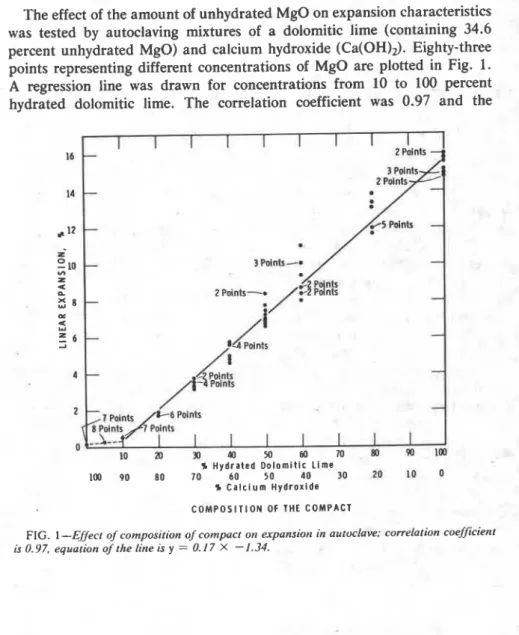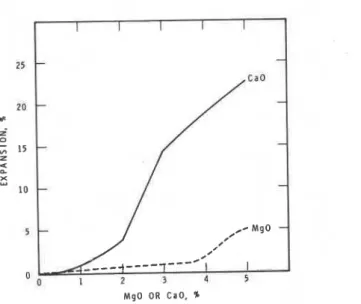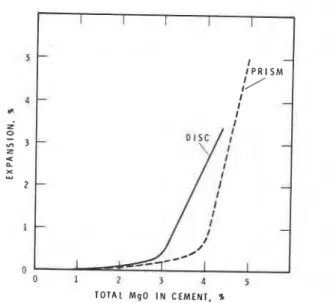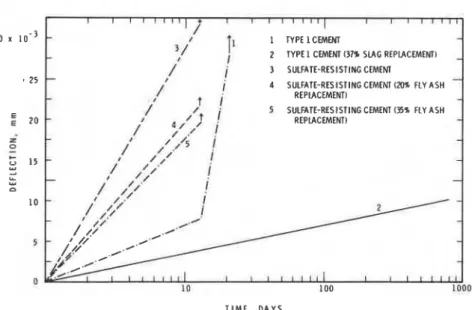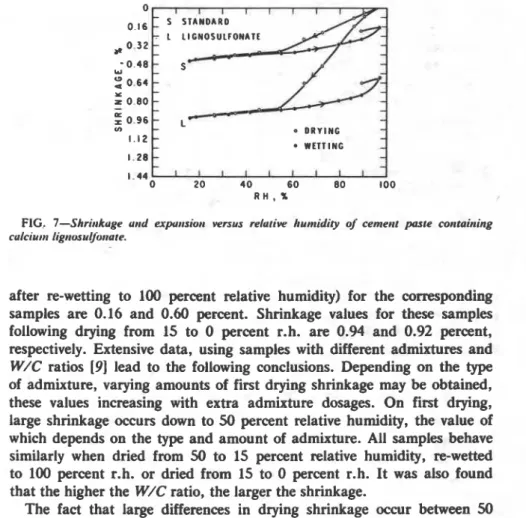READ THESE TERMS AND CONDITIONS CAREFULLY BEFORE USING THIS WEBSITE. https://nrc-publications.canada.ca/eng/copyright
Vous avez des questions? Nous pouvons vous aider. Pour communiquer directement avec un auteur, consultez la première page de la revue dans laquelle son article a été publié afin de trouver ses coordonnées. Si vous n’arrivez pas à les repérer, communiquez avec nous à PublicationsArchive-ArchivesPublications@nrc-cnrc.gc.ca.
Questions? Contact the NRC Publications Archive team at
PublicationsArchive-ArchivesPublications@nrc-cnrc.gc.ca. If you wish to email the authors directly, please see the first page of the publication for their contact information.
NRC Publications Archive
Archives des publications du CNRC
This publication could be one of several versions: author’s original, accepted manuscript or the publisher’s version. / La version de cette publication peut être l’une des suivantes : la version prépublication de l’auteur, la version acceptée du manuscrit ou la version de l’éditeur.
Access and use of this website and the material on it are subject to the Terms and Conditions set forth at
New accelerated methods for predicting durability of cementitious
materials
Feldman, R. F.; Ramachandran, V. S.
https://publications-cnrc.canada.ca/fra/droits
L’accès à ce site Web et l’utilisation de son contenu sont assujettis aux conditions présentées dans le site LISEZ CES CONDITIONS ATTENTIVEMENT AVANT D’UTILISER CE SITE WEB.
NRC Publications Record / Notice d'Archives des publications de CNRC:
https://nrc-publications.canada.ca/eng/view/object/?id=0910cb34-38bf-48b2-8d83-9f12b1225d95 https://publications-cnrc.canada.ca/fra/voir/objet/?id=0910cb34-38bf-48b2-8d83-9f12b1225d95
no.
9:
cop.;R. F. Feldmanl and
V.
S.
Ramachandranl
New Accelerated Methods for
Predicting Durability of
Cementitious Materials
REFERENCE: Feldman, R. F. and Ramachandran, V. S., bbNew Accelerated Methoda for Predicting Durability of &mentitiow Materials," Durability of Building Materials and Components. ASTM STP 691. P. J. Sereda and G. G. Litvan, Eds., American Society for Testing and Materials, 1980, pp. 313-325.
ABSTRACTS Miniature specimens of different cwfigutations have been used to study the durability of cementitious materials, TIE tests involved monitoring the dimensional c h a n g or mechanical property in the following studies under specified rigorous
conditions: (a) unsoundness of lime. (6) fallurn of white coat plasters, ( c ) unsoundness ,
of ccrnent containing magnesium oxide (MgO) and calciuni oxide (CaO). (dl durability of cement mortars cxposed to chiwide solutions. (e) resistance of sulfur-impregnated cement systems to high humidities, and ( f ) drying shrinkage of cements with and without admixtures. The results indicate that the tests are not only applicable for the prediction of durability of materials but that they also may be used to study the mechanisms of material deterioration.
KEY WORDS: durability, acceleration, cement, unsoundness, lime, plaster, sulfur- impregnation, shrinkage, admixtures, building materials
Prediction of the durability of building materials is one of the most important but difficult tasks confronting material technologists. Practical tests must yield, in a relatively short period, results that can be applied to predict the long-term performance of materials subjected to both natural and artificial conditions of exposure. Typical examples of such tests are those given in ASTM Test for Potential Expansion of Portland Cement Mortars Exposed to Sulfate (C 452
- 75) and ASTM Test for Compressive
Strength of Hydraulic Cement Mortars (Using 2-in. or 50-mm Cube Speci- mens) (C 109 - 77).The smallest specimens used in tests at present are 25 by 25 mm (1 by 1 in.) in cross section, of which at least 12.5 mm ('/2 in.) must be penetrated
by elements of the environment before a full- response in terms of the
'
Research officers Building Materials Section, Division of Building Research, National Research Council of Canada, Ottawa, Ont., Canada.314 DURABILITY OF BUILDING MATERIALS AND COMPONENTS
reaction of the whole specimen is recorded by the measurement of length. Mechanical properties are measured with 50-mm (2-in.) cubes or 75-mm (3411.) diameter cylinders where changes in response to the environment may take longer. Miniature specimens are well adapted to measuring properties of individual constituents of cement paste or aggregates [II2 and permit study of the mechanisms of deterioration [ 2 ] . A sample having one dimension of about 1.5 mm will attain equilibrium with the environment earlier than larger specimens and will give an indication of the intrinsic response of the material. In cases where failures involve critical stress gradients, specimens of larger dimensions may be needed. Depending on the material and conditions of test, several other advantages can result from the use of miniature specimens. The use of pressed disks, for example, eliminates mixing with a binder. Also, the expansion values in such speci- mens are much greater than those formed by normal methods, thus enabling better sensitivity in measurements. In a single test, more miniature speci- mens can be accommodated than would be possible otherwise because of their small size. This results in the saving of space, material, and total time required to obtain the results. They are especially valuable when only small amounts of samples are available. Miniature specimens are parti- cularly adaptable to nondestructive test methods because they can be made with uniform properties and can be exposed more easily to controlled conditions of exposure.
A large number of systems have been studied using miniature specimens
and this paper presents examples of some possible applications of this technique in testing the durability of building materials. The studies include unsoundness of lime, failure of white coat plasters, unsoundness of cement containing magnesium oxide (MgO) and calcium oxide (CaO), durability of cement mortars exposed to chloride solutions, resistance of sulfur-impregnated cements subjected to high humidities, and drying shrinkage of cements containing admixtures.
Unsoundness of Lime
Magnesium oxide, constituting a considerable proportion of dolomitic lime used in plaster finish coat or mortar, can cause failure due to the expansion resulting from the conversion reaction MgO + Mg(OH)2.
Suggested methods of testing such limes include autoclaving, for a specific period, a molded body containing a mixture of cement, lime, and water. The expansion values of such a mixture may not reflect the possible be- havior of lime alone because of the possible interaction between cement and lime under autoclaving conditions [ 3 ] . This disadvantage can be
FELDMAN AND RAMACHANDRAN ON PREDICTING DURABILITY 315
overcome by directly autoclaving small specimens formed by compacting the lime powder [ 4 ] . Other advantages inherent in the use of small speci- mens already have been described.
Disks with a nominal diameter of 31.25 mm (1.25 in.) and thickness 2 mm (0.08 in.) were made by compacting at 110 MPa. A specially made cage with compartments capable of seating 28 compacts was placed in an autoclave and the samples autoclaved at 2 MPa (295 psi) for 3 h. The linear expansion of the compacts was measured with a dial micrometer across the diameter.
Results and Diicussion
The effect of the amount of unhydrated MgO on expansion characteristics was tested by autoclaving mixtures of a dolomitic lime (containing 34.6 percent unhydrated MgO) and calcium hydroxide (Ca(0H)J. Eighty-three points representing different concentrations of MgO are plotted in Fig. 1. A regression line was drawn for concentrations from 10 to 100 percent hydrated dolomitic lime. The correlation coefficient was 0.97 and the
14
-
-
Z 0 -10-
V) Z 4 0-
5 8 d-
-
-
10 20 a so YJ 60 70 m 9o ~m*
H y d r a t e d D o l o m i t i c L i m e 100 90 80 70 60 50 40 3 0 20 10 0 5 C a l c i u m H y d r o x i d e C O M P O S I T I O N OF THE C O M P A C TFIG. 1-Effect of composition of compact orz expansiotr in autoclave; correlation coefficient
316 DURABILITY OF BUILDING MATERIALS AND COMPONENTS
significance level was 0.99. The two points corresponding to 0 and 5 percent hydrated dolomitic lime do not fall on the line, suggesting that a portion of hydrated MgO is accommodated within the pores, causing no expansion. Since the expansion is linearly related to the amount of unhydrated MgO, this technique may be used advantageously to test unsoundness in dolomitic limes.
The reliability of this technique was tested by subjecting six commercially available limes (three high-calcium and three dolomitic lime types) to compaction and subsequent autoclaving. The high calcium limes showed linear expansions of only 0.15, 0.72, and 0.98 percent, whereas the hydrated dolomitic limes showed expansions of 14.5, 17.0 and 18.5 percent.
Compounds such as calcium carbonate (CaC03), magnesium hydroxide (Mg(OH)2), and Ca(OH)2, normally present in dolomitic limes, show negligible autoclave expansion and hence do not influence the test results.
Failure of White Coat Plasters
A number of investigators have reported the occurrence of "popping" or "bulging" in white coat plasters prepared from a lime putty gaged with plaster of paris [ 5 ] . The bulging phenomenon is generally noticed at periods varying from 5 to 15 years after application of the plaster. Several attempts have been made to settle the controversial question of whether the delayed hydration of magnesium oxide is responsible for this type of failure. White coat plaster typically contains many constituents, for example, free water, CaS04.2H20, Ca(OH)2, Mg(OH)2, MgO, CaC03, calcium sulfate (CaSOd, silicon oxide ( S i 0 3 , aluminum oxide (A1203), ferric oxide (Fe203), and possible other compounds, and therefore, is not easily amenable to a quantitative analysis. In addition, an investigation of the failed plaster by itself may not provide complete information on the causes leading to the failure unless the original plaster is also available for comparative purposes. In actual practice, it is usually difficult to obtain the original plaster sample. In one of the surveys of plaster failures, it was discovered that in one building excessive plaster failure had occurred on one of the four walls while the plaster on the other three walls was apparently in sound condition
[ 6 ] . Since the same plaster had been applied on all the walls originally, this presented a case for study where a direct comparison could be made between the failed plaster and that which was in sound condition. The technique of pressed disks was used to investigate the potential soundness.
The failed and sound plasters were removed carefully from the walls, crushed to pass through a 200 mesh sieve, and compacted in a mold 31.26 mm (1.25 in.) diameter at a load of 110 MPa (16 225 psi) forming disks about 2 mm thick. The disks were autoclaved at 2 MPa (295 psi) for 1 h and the length changes were measured with a micrometer.
FELDMAN AND RAMACHANDRAN ON PREDICTING DURABILITY 317
Results and Discusion
Table 1 shows the amounts of various constituents in
the
plaster calculated on the basis of chemical analysis and weight loss. The percent MgO that rema'ined unhydrated was equivalent to the difference between the total MgO and the MgO present as Mg(OH)2. The sound plaster contains 14.88 percent MgO, whereas the failed plaster contains only 6.98 percent MgO. This would indicate that more MgO had hydrated in the failed plaster. The autoclave treatment facilitated almost complete hydration of all the unhydrated MgO, as is evident from the third and fourth columns in the table.Differential thermograms of the plasters show that in the sound plaster the Mg(OH)* peak was much less intense than that in the failed plaster. This would indicate that much more MgO had hydrated in the failed plaster-the hydration of excessive amounts of MgO appears to have caused expansion and failure.
The autoclave expansion values of disks for the sound plaster and the failed plaster are, respectively, 15.4 and 5.4 percent. The diierence in the expansion between
the
two samples can be accounted for by the dif-ferences in the unhydrated MgO content. A 7.9 percent diierence in the MgO content in these two samples has resulted in a 10 percent difference in the expansion.
This
expansion must havebeen
responsible for the failure of white coat plaster on oneof
the walls in question.The
results also would indicate that if conditions of high humidity and temperatures prevail over a long period the sound plaster also would eventually expand.If the dependence of percent of expansion on the amount of hydration of dolomitic lime could be established, limits of the amount of permissible MgO and
of
expansion in white coat plasters could be worked out.In portland cement a proportion of MgO existing in a dead burnt state may take several years to hydrate when exposed to normal conditions of humidity and temperature. As the conversion
of
MgO to Mg(OH)* involves a molar volume expansion of 117 percent, the presence of excessive amounts of MgO in portland cement is therefore not desirable. The Canadian Standards Specification for Portland Cements (AS-1977), for example, requires that portland cement contain no more than 5 percent MgO and that the autoclave expansion not exceed 1.0 percent. The corresponding limits are 6.0 and 0.8 percent, respectively, inthe
ASTM Specification for Portland Cement (C 150-
77). Dead burnt CaO, if present in portland cement as free lime, also would promote volume expansion. A study was undertaken to evaluate the potentiality of thin disks as a replacement for the 25 by 25 by 282-mm (1 by 1 by 1l1/4-in.) prisms normally recommendedI
318 DURABILITY OF BUILDING MATERIALS AND COMPONENTS
TABLE 1-Culculared percutttuges o j vartous cotwrituetrts of plusrer by chenticul artulysis.
Failed Sound Failed Plaster Sound Plaster Const~iuent Plaster Plaster (autoclaved) (autoclaved)
CaCO, 21.59 24.54 22.27 24.54
Gypsum (as CaSO,, for
autoclaved saniples) 26.66 27.73 21.93 22.10 21.66 21.58 23.12 20.18 Mg(OH), 21.87 10.59 31.36 32.40 MgO 6.98 14.88 1.02 . .
.
SiO? 0.49 0.48 0.44 0.58 AlzO, <0.05 <0.05 <0.05 <0.05 Expansion. % 5.4 15.4in standard specifications for the autoclave test and also to compare the relative expansive nature of CaO and MgO.
A normal portland cement containing 1.28 percent MgO and 0.48 percent CaO was mixed with dead burnt MgO or CaO (0.5 to 4.5 percent .by weight) and made into disks 12.5 mm (1/2 in.) in diameter by compaction
load of 27.8 MPa (800 psi) or 31.25 mm (1'/4 in.) in diameter at a load
of 8.25 MPa (1500 Ib). These disks, and the prisms made according to
ASTM Test for Autoclave Expansion of Portland Cement (C 151
-
74a),were subjected to autoclave treatment at 2 MPa (295 psi).
I Results attd Discussion
I Figure 2 shows the relative autoclave expansion values for portland
cement disks 12.5 mm (l/2 in.) pressed at 27.8 MPa (800 psi) containing
MgO or CaO. In the cement containing MgO the expansion is low up to about 4 percent addition, after which a steep increase occurs. The expansion values are much higher in disks containing CaO. A molar expansion of
90 percent for the reaction CaO + Ca(OH)2 compared with 117 percent
for the MgO + Mg(OH)2 reaction cannot explain these differences. If
expansions are compared on equivalent molar basis (1 g CaO = 0.018
mol and 1 g MgO = 0.0248 mol), MgO would be expected to show more expansion. It appears that the particle size of the oxides, the crystalline dimensions, and crystalline growth pressures may be important factors influencing the overall expansion. These results also reveal that in speci- fications for unsoundness of cement the limitations should be based on the potential expansive nature of CaO and MgO and not just on MgO.
Figure 3 compares the autoclave expansion of disks 31.25 mm (1.25 in.)
in diameter pressed a t 8.25 MPa (1500 psi) with that of prisms containing different amounts of MgO. At 4 percent MgO the prism expands by about 0.75 percent, close to the limit specified by ASTM. At this concentration the expansion in the disk is much higher, being 2.4 percent. The results
FELDMAN AND RAMACHANDRAN ON PREDICTING DURABILITY 319
MgO OR CaO, %
FIG. 2-Autoclave expansion in disks made with cement containing different amounts of CaO and MgO.
demonstrate that disks are much more sensitive to autoclave treatment than the prisms, providing an alternate technique for the determination of unsoundness in cements.
Durability of Cement Mortars Exposed to Chloride Solution
The nature of the ions and their concentration can govern the types of deleterious chemical reactions occurring in structural concretes exposed to salt solutions. Strong solutions of sodium, potassium, calcium, and magnesium chlorides, react with the Ca(OH)2 present in the portland cement paste and even gradually destroy calcium silicate hydrate. These reactions initially produce surface softening followed by strength loss due to reaction proceeding inwards into the specimen. The detection of the onset of deterioration would be delayed considerably in large specimens as would the dimensional changes that are caused by the deleterious chemical reactions. These physical effects are more pronounced and are observed much earlier in smaller specimens. Hence studies were made using cement mortar disks 75 mm (3 in.) in diameter and 6.4 mm (0.25 in.) thick sliced from 75 by 254 mm (3 by 10 in.) cylinders. The mortars were cured for 15 or 240 days before exposure to a salt solution. The salt solu- tion contained 27.5 percent CaCI2, 3.9 percent magnesium chloride (MgC12), 1.8 percent sodium chloride (NaCI) and 0.1 percent sodium bicarbonate (NaHC03). This solution was prepared to correspond to mine shaft water. A nondestructive test involving the measurement of deflection in flexure
320 DURABILITY OF BUILDING MATERIALS AND COMPONENTS
TOTAL MgO I N CEMENT, %
FIG. 3-A compuriso~r of uutockuve expunsiorr in disks and prisms.
under constant load as a function of time of exposure to salt solution was adopted to investigate the durability of the mortar; this test is similar to one used previously on disks [7J but on a larger scale. Because deflection in this mode of testing is inversely proportional to the cube of the thickness, a small effect at t h e surface can be detected quickly.
Two sulfate-resisting cements and one Type I normal portland cement were used. Two samples of fly ash containing 47.5 and 55.6 percent SiOz
were used as replacements of cement at 20 and 35 percent forming a blend with the sulfate-resisting cement. The blended cements made by mixing Type I portland cement with 37.5, 50, and 70 percent blast furnace slag also were examined.
Results and Discussion
The results are recorded as the difference between the deflection of the samples stored in the salt solution and those stored in water. Results for some of the samples are presented in Figs. 4 and 5. Figure 4, for the 15-day cured samples. shows that the slag-containing cement sample has a rela- tively high resistance to the salt solution even at 700 days. Of the remaining samples. the sulfate-resisting cement mortar failed first, followed by the two fly ash-replaced cement and then the Type 1 cement. The results for the 240-day cured samples in Fig. 5 show a similar sequence as before except that the fly ash-replaced cements are now much more durable and rank in the same order as the slag cement. All the specimens cured for 240 days are more durable than those cured for only 15 days.
FELDMAN AND RAMACHANDRAN ON PREDICTING DURABILITY
321
T I M E . D A Y S 3 0 I O - ~
FIG. 4-Deflection of cement mortars (cured 15 days) versus period of exposure of salt solutions.
I I I I 11 b i 1 I I T I ~ T I I I I I I 1 ~ 4 1 -
-
I /1 TYPE 1CEMENT
'i
2 TYPE 1 CEMENI (37% SLAG R E P L A C M I )-
/' I 3 SULFATE-RESISTING CEMEM 1 TYPE l CEMENT 2 TYPE 1 CEMENT 137% SLAG REPLACEMENT) 3 SULFATE-RESISTING CEMENT 4 SULFATE-RESISTING CEMENT 120%FLY ASH REPLACEMENT1
1 0 1 0 0 1 0 0 0
T I M E . D A Y S
r 2 5
-
I 4 SULFATE-RESISTING CEMEM (20% FLY A S H
-
* REPLACEMENT]
-
5 SULFATE-RESISTING CEMEM (35% FLY A S H
REPLACEMENT)
-
0-
+ C u 1 5-
u - 2 /-
I I I l l l l l l I 1 I I I I I I 1 0 1 0 0 1000FIG. 5-Deflection of cement mortars (cured 240 days) versus period of exposure to salt solutions.
These results are in general consistent with the observation that the greater the amount of free Ca(OH)2 in the specimen, the more susceptible it is to attack. This is also true for the sulfate-resisting cements which have a higher tricalcium silicate (C3S) content.
322
DURABILITY OF BUILDING MATERIALS AND COMPONENTSResistance of Sulfur-Impregnated Cement Systems to High Humidities
Impregnation of concrete with sulfur can increase strength values by more than 100 percent
[ A .
Impermeability also can be increased by impreg- nation, leading to an enhancement in corrosion resistance. Meager infor- mation is available on the effectiveness of this impregnant in improving long-term durability. In order to study more effectively the durability of a sulfur-impregnated cement, thin disks 1.3 mm thick were subjected to 100 percent relative humidity and changes with time to Young's modulus and niicrohardness were observed 171.Silica-portland cement mixtures containing 5, 10, 20, 30, 50, and 65 percent silica prepared by grinding Ottawa silica sand to pass 100 mesh sieve were prepared at a water-solid ratio of 0.45 and autoclaved. These were impregnated with sulfur. Room-temperature cured cement pastes also were prepared and impregnated with sulfur and all the samples were exposed to 100 percent water vapor.
Figure 6 presents the observed length changes. All specimens except those containing 5 and 10 percent SiOz expanded after a short period of
P R E P A R A T I O N S W I S = 0 . 4 5
T I M E , d
I
FIG. 6-Exputrsiotr oj- uutocluved impregtluted cemerrt-silicu prepururiotzs otz expoAure to 100 percw11 relurive hutltidity versus titne. Wufer solid rutio (W/s) = 0.45.
exposure and disintegrated. With 5 and 10 percent S O 2 , expansion was relatively less and was constant up to 260 days. The unimpregnated speci- mens showed a rapid rate of initial expansion which decreased with time, and iq these samples expansion was considerably lower than that of those impregnated with sulfur. In the unimpregnated specimens expansion was
greater the higher the surface area [8].
It became obvious that all impregnated systems studied were permeable to water and other vapors, irrespective of whether large increases in me- chanical properties were achieved or not. Other observations indicated that the expansion is due to physical effects and is caused by swelling of the high surface area impregnant within the pores when it absorbs vapors.
It was concluded that matrices with specific surface areas about 20 m2/g, when impregnated with sulfur and exposed to water vapor, are subjected to high internally generated stresses. This may lead to failure of the specimen. However, when such a study was made on mortar speci- mens the effects were evident only after a much longer period. Thus this study indicates the expansion potential of an impregnated body and also shows that caution should be exercised when using the sulfur impregnation technique on high surface area porous bodies.
Drying Shrinkage of Cements With or Without Admixtures
"Drying shrinkage" is one of the least understood phenomena in concrete technology. It has not been possible to correlate the drying shrinkage with any one of the many factors affecting it. Shrinkage itself imposes severe stress gradients on the material and affects measurements, and in large specimens it is virtually impossible to reach a state of equilibrium. However, this could be obviated to a large extent by the use of miniature specimens. An investigation was carried out to study the effect of admixtures and other factors on the drying shrinkage of such specimens.
Specimens were cut in thin wafers, 1.2 mm thick, 10 mm wide, and
30 mm long, from two cement pastes made from Type I cements containing total alkali contents of 0.8 and 1.3 percent. They were made with W/C ratios of 0.5 and 0.8 with two different amounts of admixtures and cured for over a year. Two methods of drying were used. In the so-called slow
method, each sample was exposed to 11 different humidities from 100 to
15 percent r.h. for a total period of 6 months. The fast method involved
exposing the samples directly to 40 percent relative humidity.
Shrinkage values for an admixture-free sample and one containing three times the normal dosage of calcium lignosulfonate are shown in Fig. 7. Shrinkage on drying from 100 to 40 percent relative humidity is 0.44 percent for the standard and 0.94 for the sample containing calcium lignosulfonate. The residual shrinkage values (nonrecoverable shrinkage
324 DURABILITY OF BUILDING MATERIALS AND COMPONENTS
W E T T I N G
0 20 4 0 60 80 100
R H , X
FIG, 7-Shrirtkuge urrd expurrsiorr versus reluriw humidig of cement paste containing culciurn IigrtusulJorrare.
after re-wetting to 100 percent relative humidity) for the corresponding samples are 0.16 and 0.60 percent. Shrinkage values for these samples following drying from 15 to 0 percent r.h. are 0.94 and 0.92 percent, respectively. Extensive data, using samples with different admixtures and
W/C
ratios [9] lead to the following conclusions. Depending on the type of admixture, varying amounts of first drying shrinkage may be obtained, these values increasing with extra admixture dosages. On first drying, large shrinkage occurs down to50
percent relative humidity, the value of which depends on the type and amount of admixture. All samples behave similarly when dried from50
to 15 percent relative humidity, re-wetted to 100 percent r.h. or dried from 15 to 0 percent r.h. It was also found that the higher theW/C
ratio, the larger the shrinkage.The fact that large differences in drying shrinkage occur between
50
and 100 percent relative humidity suggests that admixtures mainly influence the degree of dispersion of the hydrated cement, in terms of the alignment of sheets and displacement of ends of sheets. This technique provides a definitive and rapid method of determining the effect of admixtures on drying shrinkage of hydrated cements.Use
of miniature specimens permits observations of the changes in the physical and chemical characteristics of materials at a much earlier period than is possible with larger specimens. By using this method the potential durability of a material exposed to external elements can be predicted. If the failure is caused by gradient effects, results using larger specimens provide a more dependable basis for predicting the durability of a material.FELDMAN AND RAMACHANDRAN ON PREDICTING DURABILITY
325
Acknowledgments
The authors gratefully acknowledge the technical assistance afforded
them by G. Aarts during these tests. This paper is a contribution from the
Division of Building Research, National Research Council of Canada and is published with the approval of the Director of the Division
References
[ I ] Grattan-Bellew, P. E. and Litvan, G. G. in Proceedings, Alkali Symposium, London,
England, Sept. 1976, pp. 227-245.
[2] Mehta, P. K. and Gjow, 0. E., Journal of Testing and Evaluation, Vol. 2, No. 6, 1974,
pp. 510-514.
[3] Ramachandran, V. S. and Sereda, P. J. in World Cement Technology, Vol. 9, No. 1,
1978, pp. 3-8.
[4 Ramachandran, V. S., Feldman, R. F., and Sereda, P. J. in Materials Research and
Standards, Vol. 5, No. 10, 1965, pp. 510-515.
[5] Ramachandran, V. S., Sereda, P. J., and Feldman, R. F. in Materials Research and
Standards, Vol. 4, No. 12, 1964, pp. 663-666.
[6] Ramachandran, V. S., Sereda, P. J., and Feldman, R. F. in Materials Research and
Standards, Vol. 8, No. 1, 1968, pp. 24-28.
[q Feldman, R. F. and Beaudoin, J. J. in Cement and Conrete Research. Vol. 7, No. 1, 1977, pp. 19-30.
181 Feldman, R. F. and Beaudoin, J. J., "Some Factors Affecting Durability of Sulfur- Impregnated Porous Bodies," (in preparation).
[9] Feldman, R. F. and Swenson, E. G. in Cement and Concrete Research, Vol. 5, No. 1, 1975, pp. 25-35.
